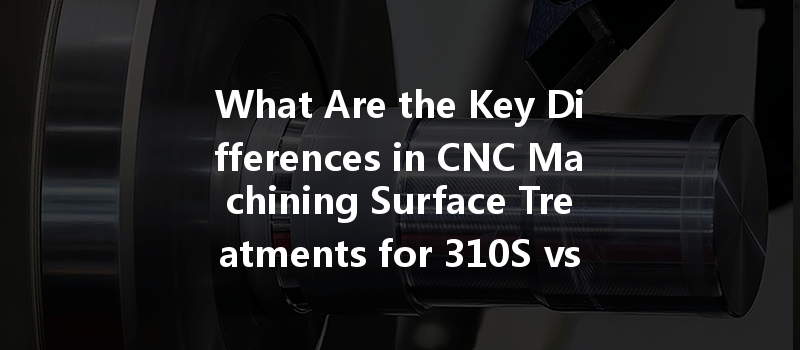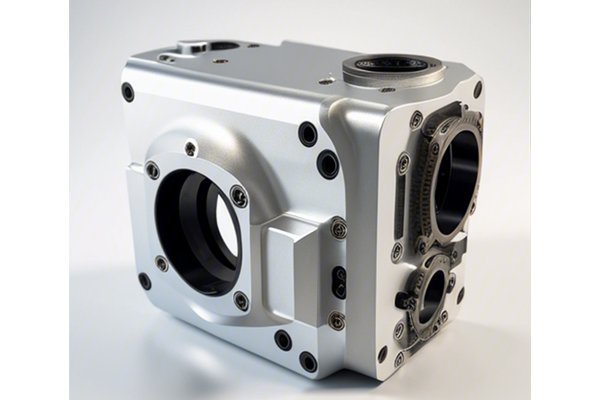Did you know that stainless steel is one of the most widely used materials in manufacturing and construction, accounting for approximately 10% of global steel production? Its unique properties make it ideal for a variety of applications, especially where corrosion resistance and durability are critical. However, not all stainless steels are created equal, and understanding the differences between types, especially in their CNC machining surface treatments, can have a significant impact on manufacturing processes, product quality, and even cost efficiency.
In this blog, we will dive deep into the intricacies of CNC machining surface treatments as they apply to 310S and 430 stainless steels. We will explore their chemical compositions, properties, and the significance of appropriate surface treatments and coatings in enhancing performance and longevity.
What is CNC Machining?
CNC (Computer Numerical Control) machining is a manufacturing process that utilizes pre-programmed computer software to control the movement of machinery and tools. It’s a highly precise method for creating intricate parts and components from various materials, including metals, plastics, and wood. CNC machining can produce complex shapes and designs with superior accuracy, making it an essential process in industries such as aerospace, automotive, and medical devices.
Overview of 310S and 430 Stainless Steel
310S Stainless Steel
Composition & Properties
310S is an austenitic stainless steel that contains high levels of chromium (about 25%) and nickel (about 20%). These elements provide excellent oxidation resistance, high-temperature strength, and the ability to withstand corrosive environments, making 310S a top choice for applications involving elevated temperatures (up to 1,200°C or 2,192°F).
Applications
Common applications for 310S include furnaces, heat exchangers, and chemical processing equipment. Its resistance to scaling and deformation at high temperatures makes it ideal for environments subjected to thermal shock.
430 Stainless Steel
Composition & Properties
430 stainless steel is a ferritic stainless steel containing about 16% chromium and minimal nickel. It is known for its good corrosion resistance, superior formability, and moderate price, making it suitable for general-purpose applications where high resistance to corrosion is important but where exposure to extreme temperatures is limited.
Applications
Applications of 430 stainless steel include automotive components, kitchen appliances, and other environments where resistance to oxidation isn’t crucial, but corrosion matters.
Surface Treatments: The Role They Play
Surface treatments in CNC machining are essential for enhancing specific properties of the material. These processes can mitigate issues like corrosion, wear, and thermal degradation. The choice of a suitable surface treatment depends on the type of steel, the application, and performance requirements.
Why Surface Treatment Matters
Both 310S and 430 stainless steels offer good corrosion resistance, but their effectiveness can enhance significantly with the right treatment.
In applications subjected to abrasion, surface treatments can improve wear resistance, prolonging the service life of components.
In consumer products, the appearance of the surface often plays a crucial role, and treatments can enhance aesthetic appeal.
Common Surface Treatments for Stainless Steel
Several surface treatments are commonly applied to stainless steel. The choice between them generally hinges on the specific grade of stainless steel and its intended use:
Passivation involves applying an acid solution to remove free iron and enhance the chromium layer, increasing corrosion resistance, especially in 430 stainless steel.
Electropolishing is an electrochemical process that smoothens and brightens the stainless steel surface, making it ideal for both 310S and 430 steels, particularly in environments that require stringent hygiene standards like pharmaceutical and food processing industries.

Coatings such as PVD (Physical Vapor Deposition) and CVD (Chemical Vapor Deposition) can be applied to provide additional protection against oxidation, wear, and corrosion in 310S, which may encounter harsh conditions.
Shot peening involves bombarding the surface with hard particles to induce compressive stresses, enhancing fatigue resistance. This method is particularly beneficial for components made from 310S used in high-stress environments.
The Differences in Treatment Approaches
While both 310S and 430 stainless steels can undergo various surface treatments, the nuances in their compositions necessitate tailored approaches:
Surface Treatment for 310S
CNC Machining Surface Treatment for 310S:
Surface Treatment for 430
CNC Machining Surface Treatment for 430:
Selecting the Right Treatment
Choosing the appropriate surface treatment is critical in ensuring optimal performance and longevity of the component. Consider the following factors when selecting treatment for CNC machining:
In summary, while both 310S and 430 stainless steels offer beneficial properties for various applications, understanding their respective CNC machining surface treatments can significantly affect performance and durability. Surface treatment processes like passivation, electropolishing, and specialized coatings should be tailored to the specific material properties of each type of stainless steel and the intended application.
As we move into an era of advanced manufacturing, being informed about these differences not only helps in making smarter manufacturing choices but also ensures that products are tailored to meet specific environmental conditions and performance expectations.
Why This Blog is Important
The landscape of CNC machining is evolving rapidly, and relevant knowledge is crucial for engineers, designers, and decision-makers involved in manufacturing. By focusing on the surface treatments of different material grades, we can optimize performance, minimize failures, and ultimately achieve greater efficiency in production. Understanding these elements is not just beneficial; it is essential for staying competitive in today’s market.
To ensure you stay ahead of the curve, continue to explore and study these evolving technologies—your next manufacturing breakthrough may depend on it!






